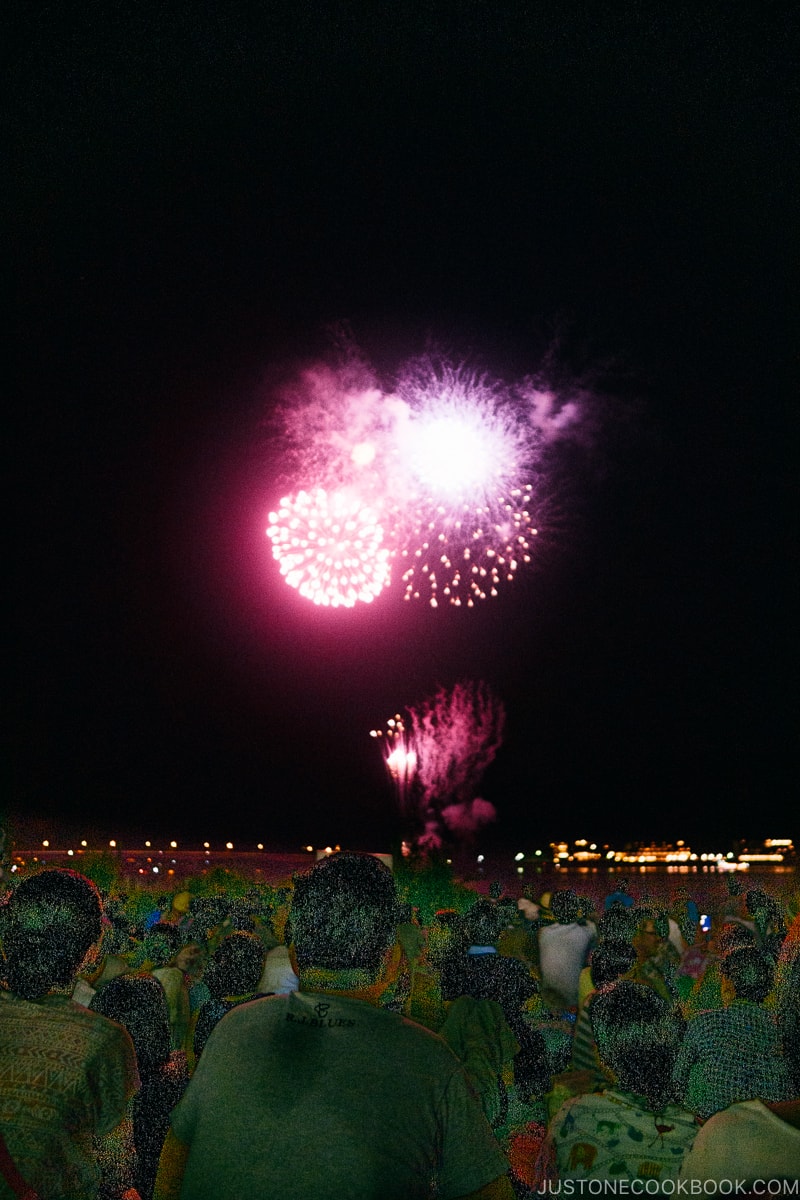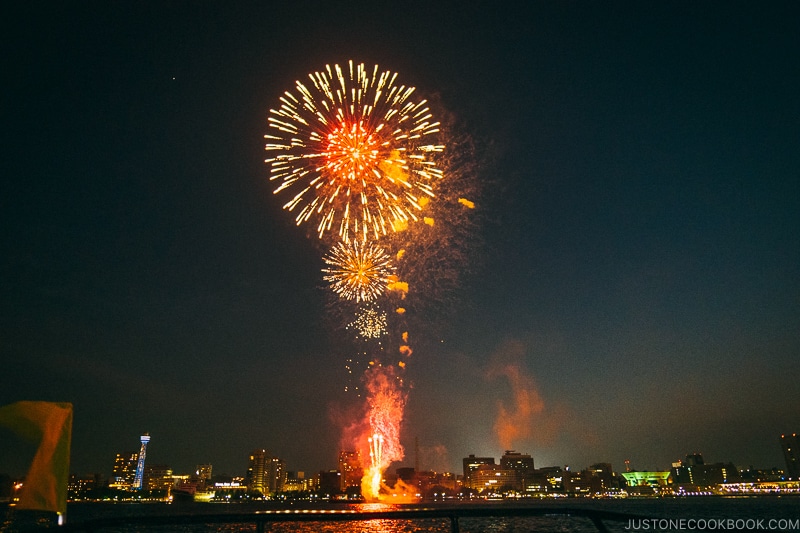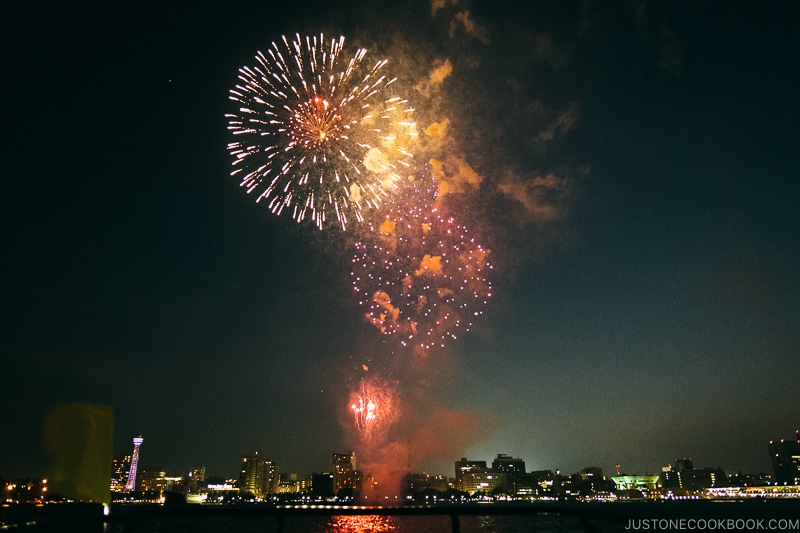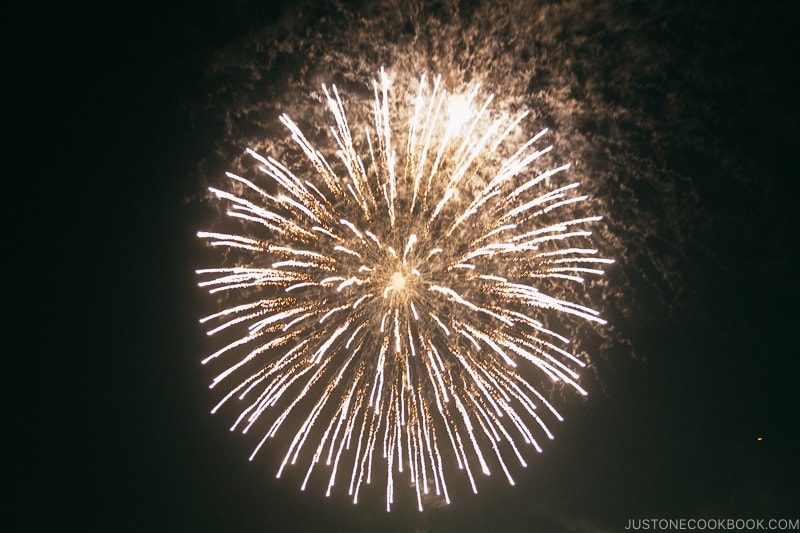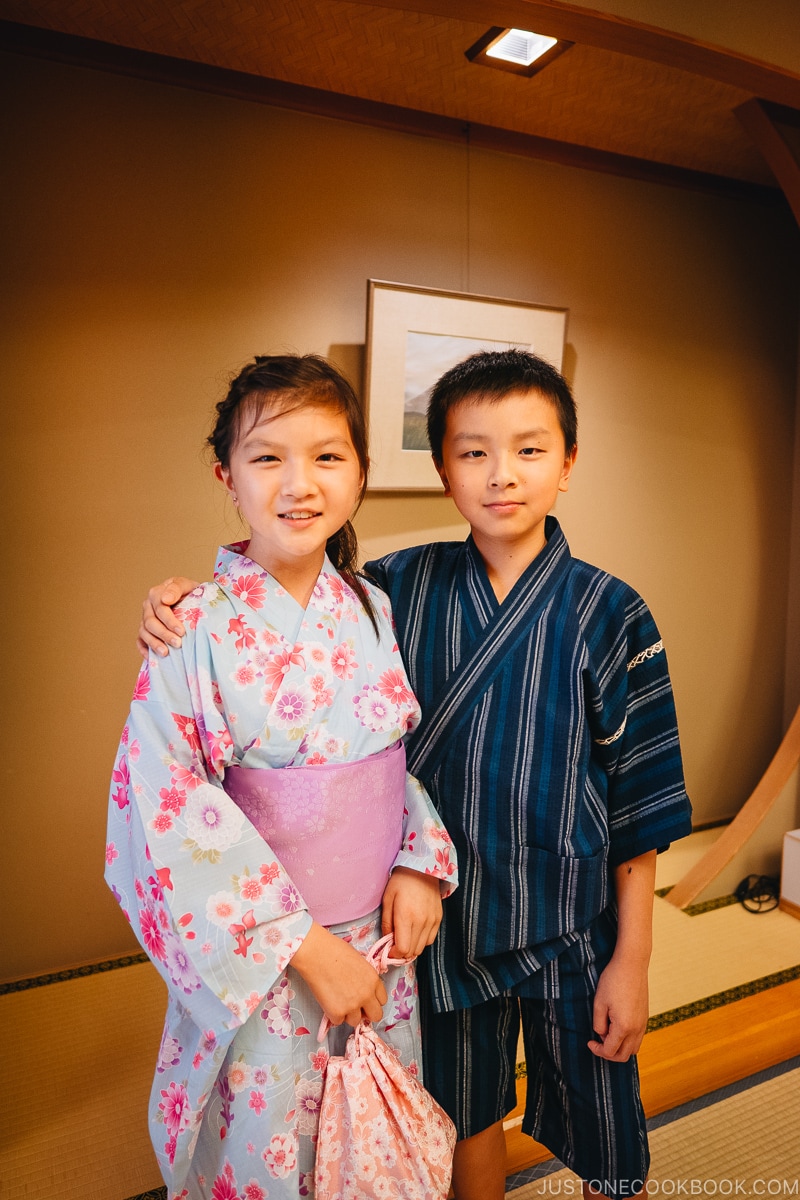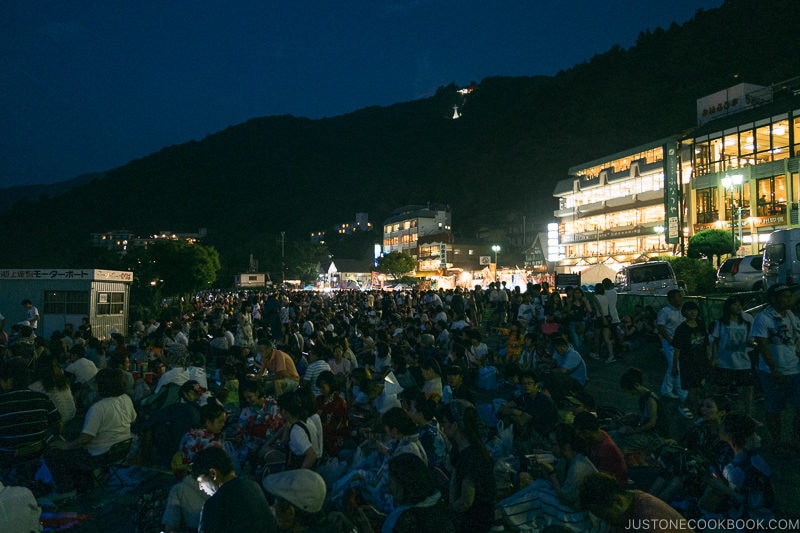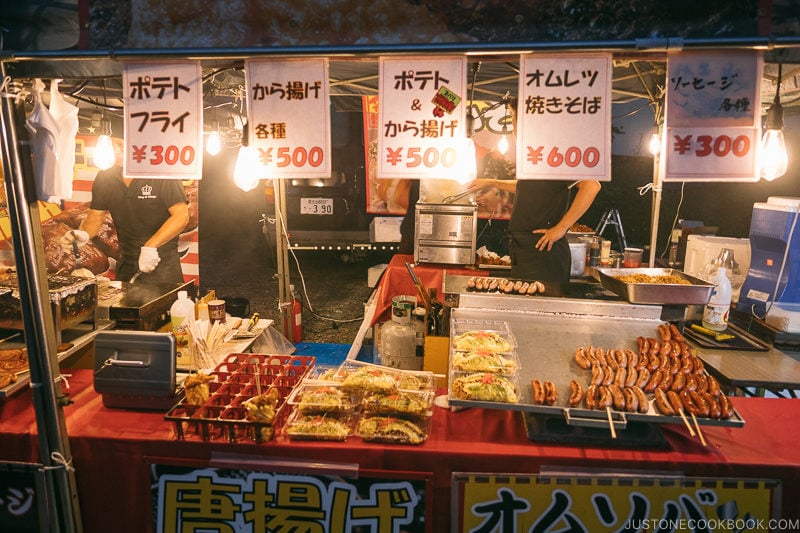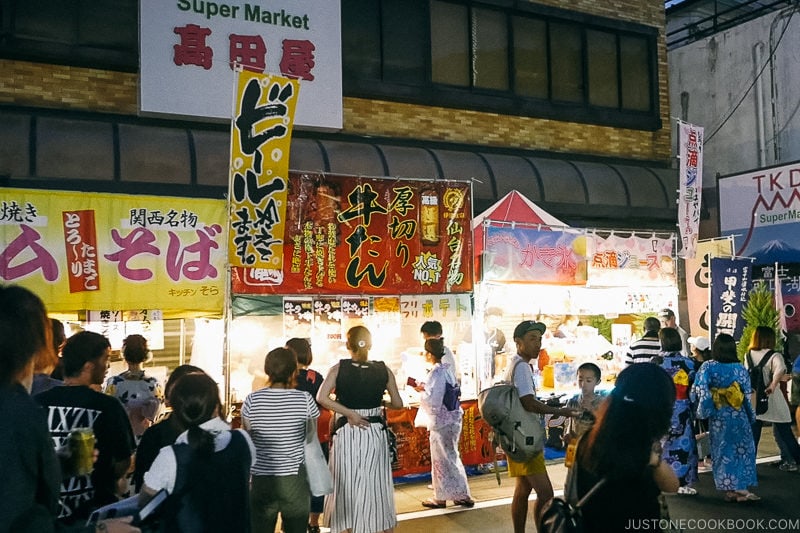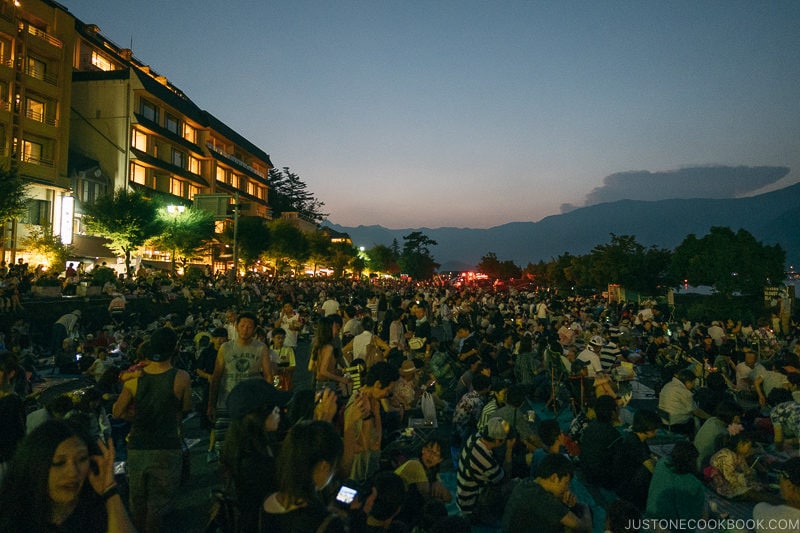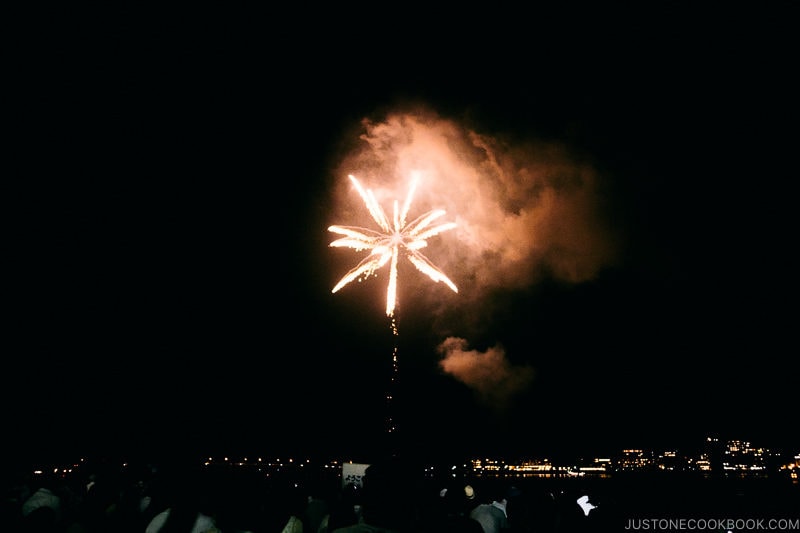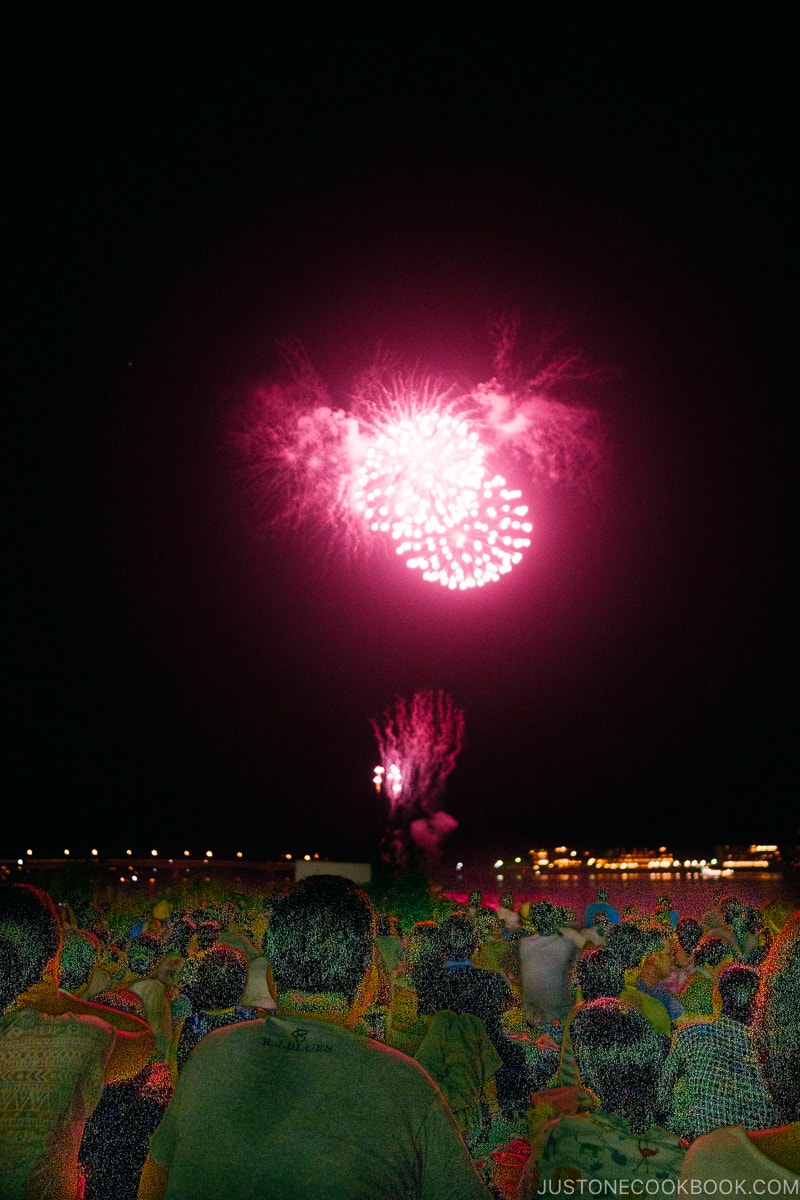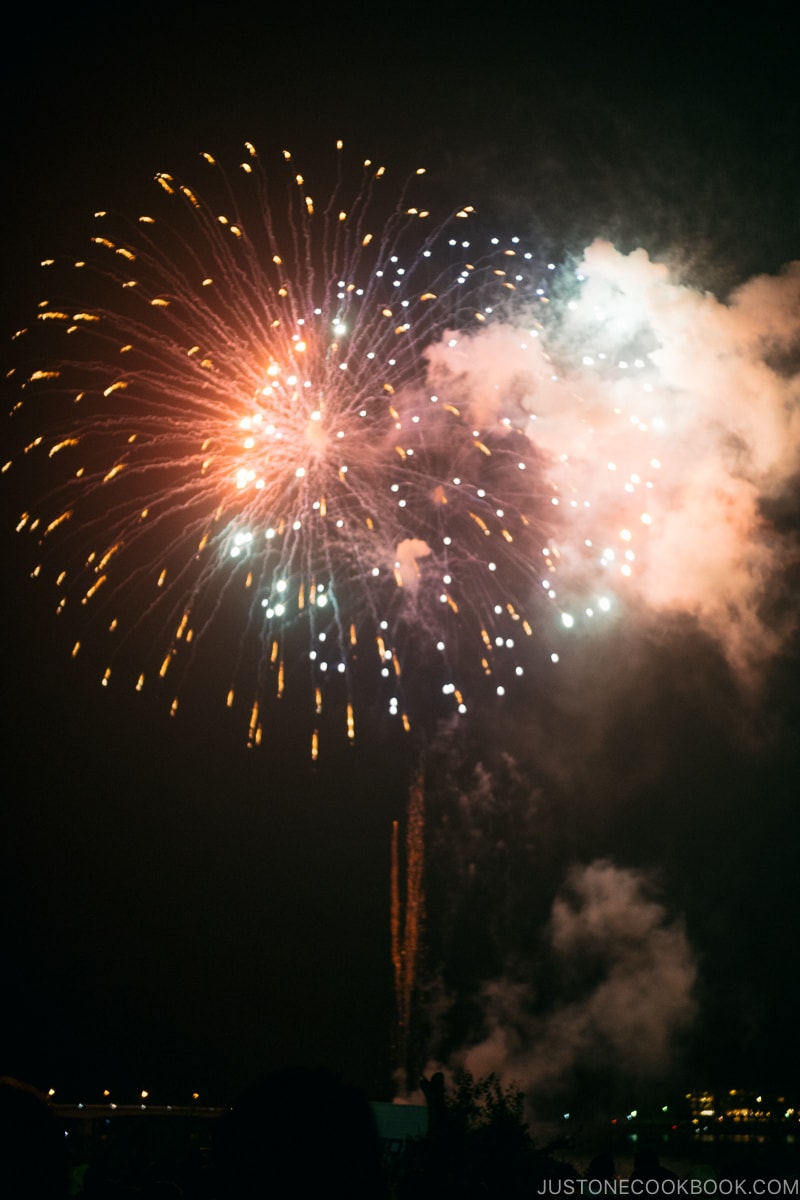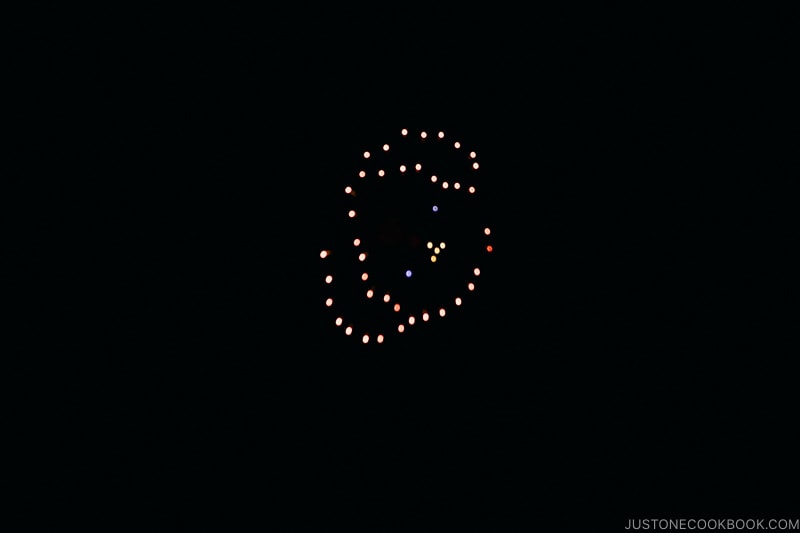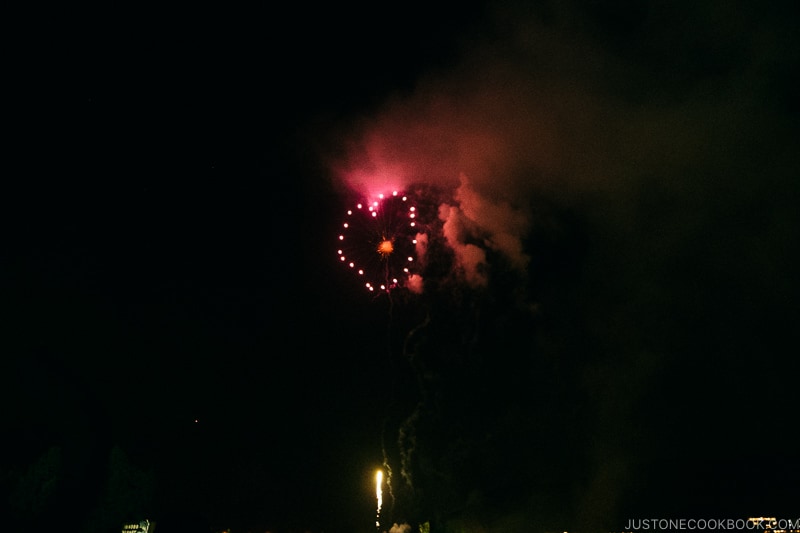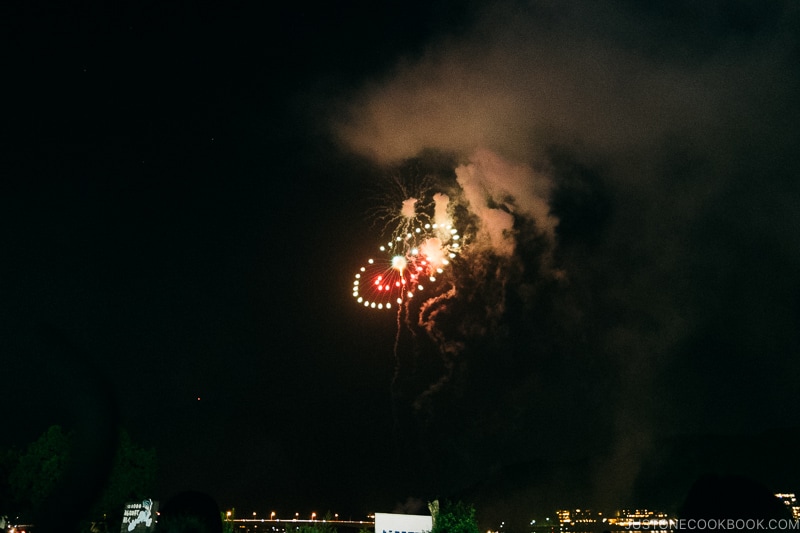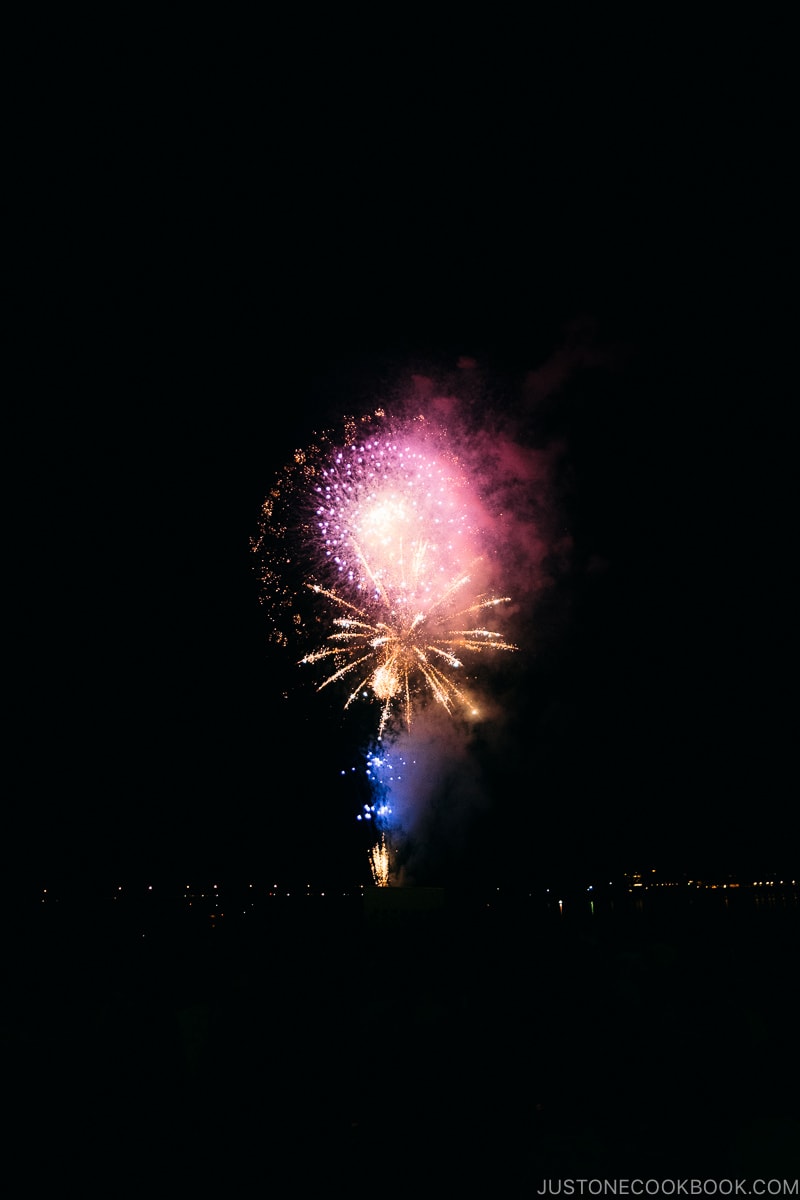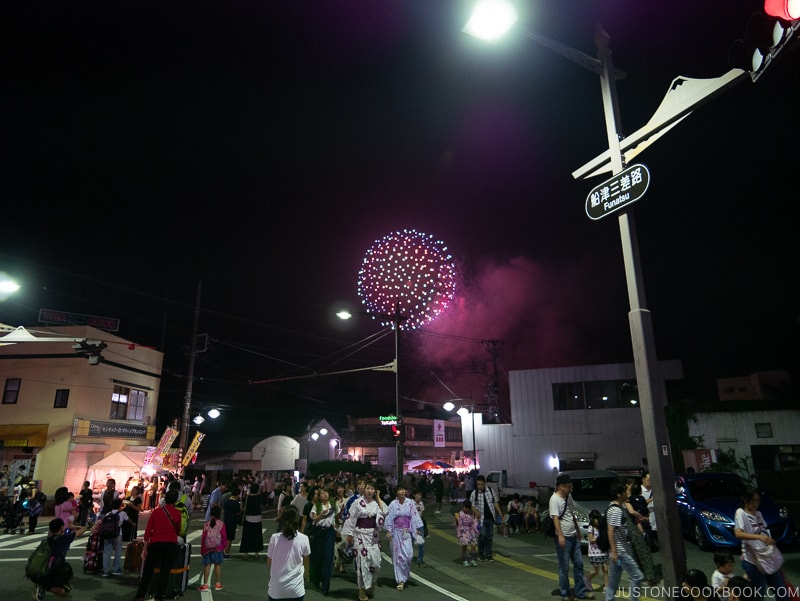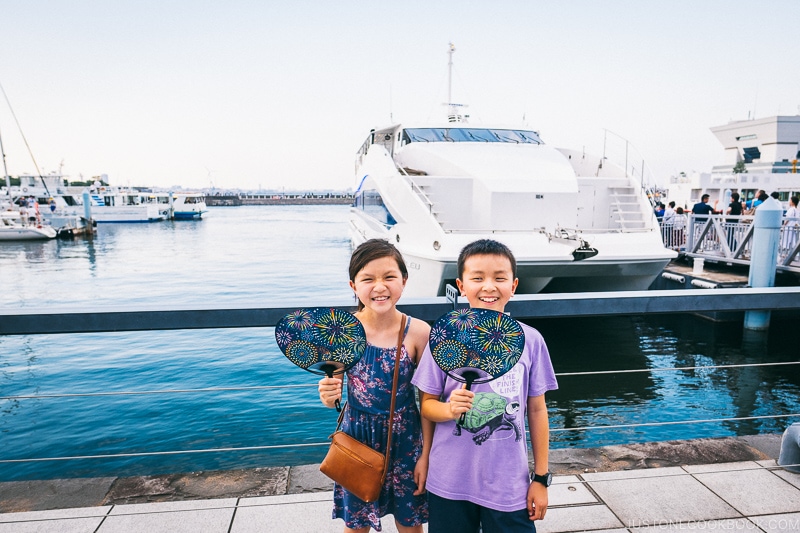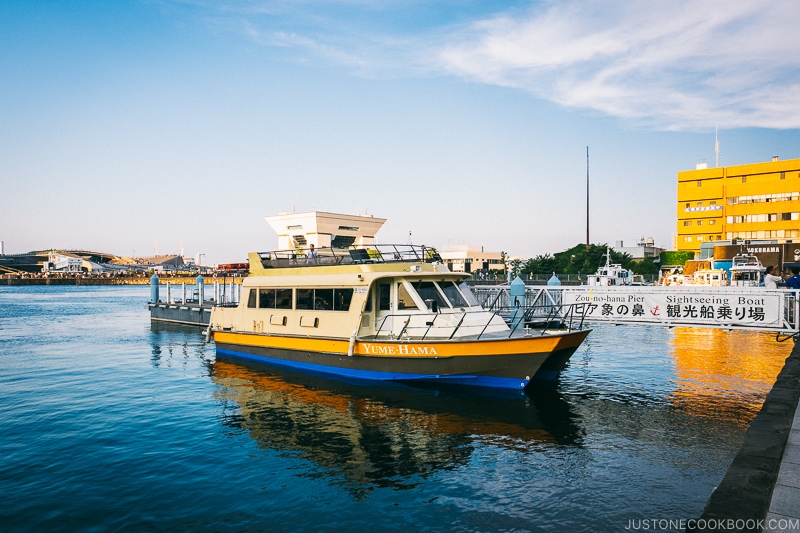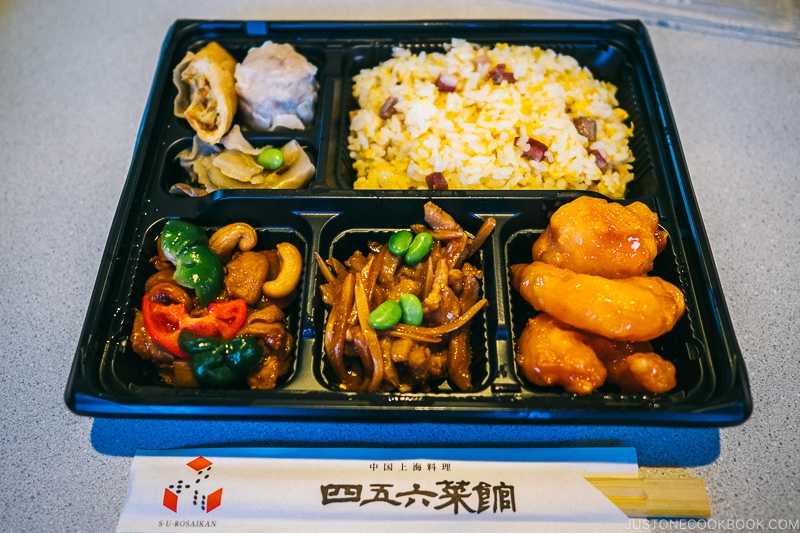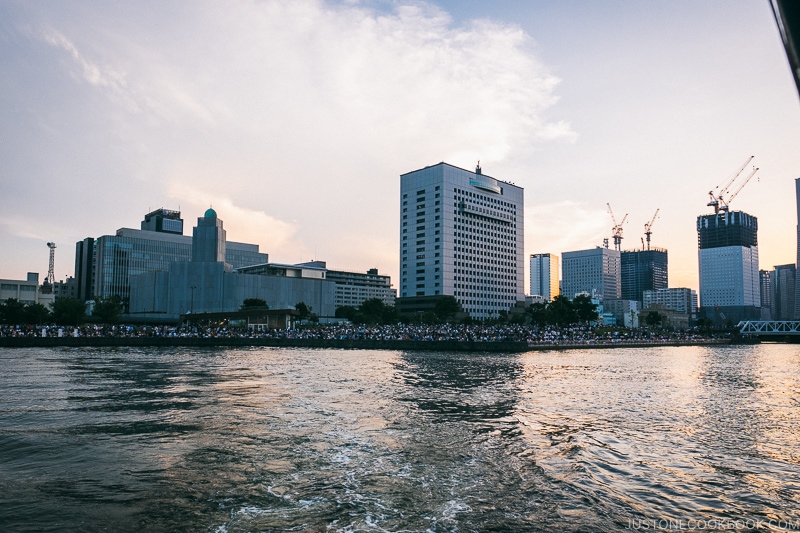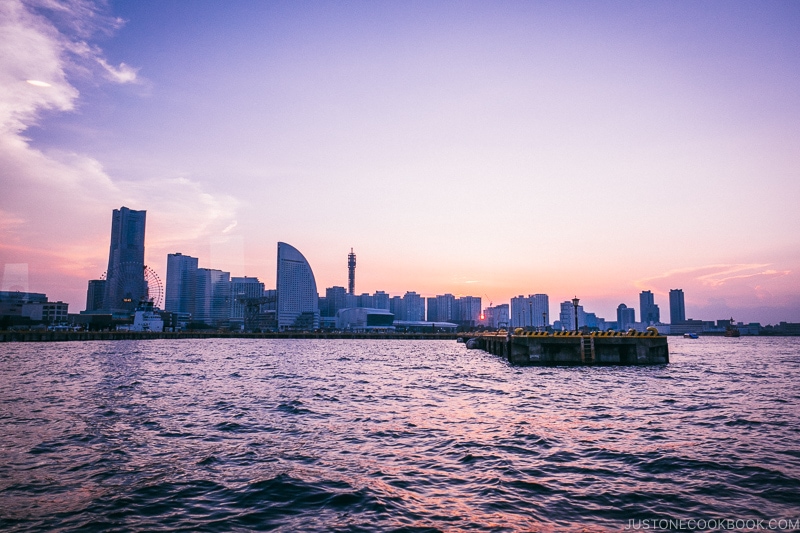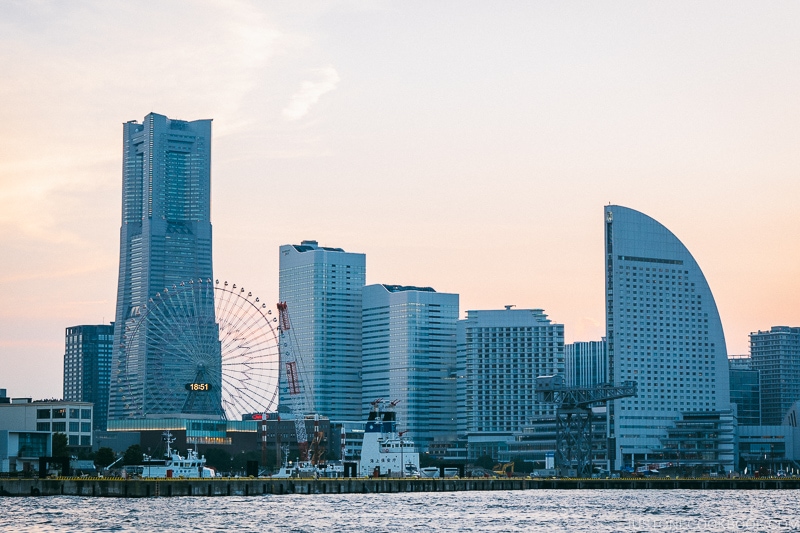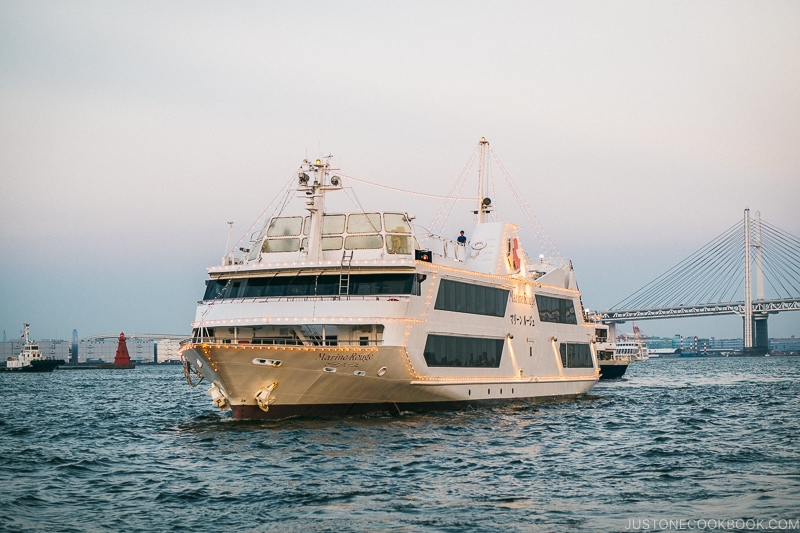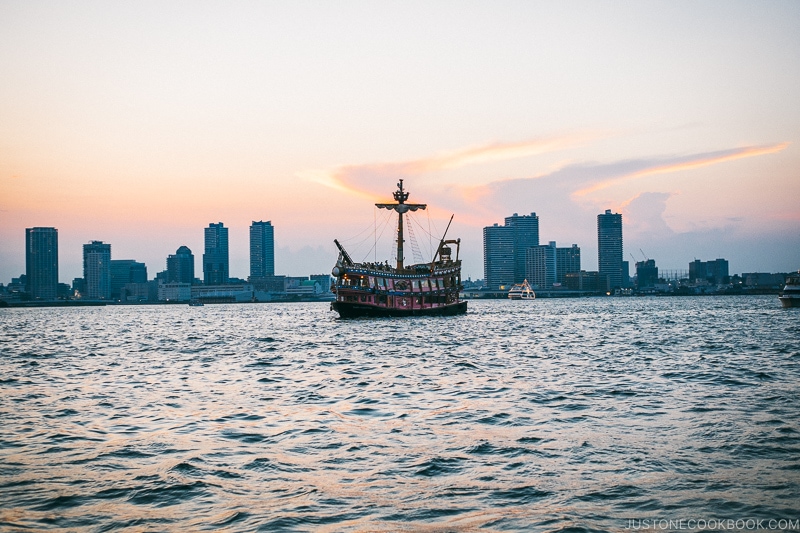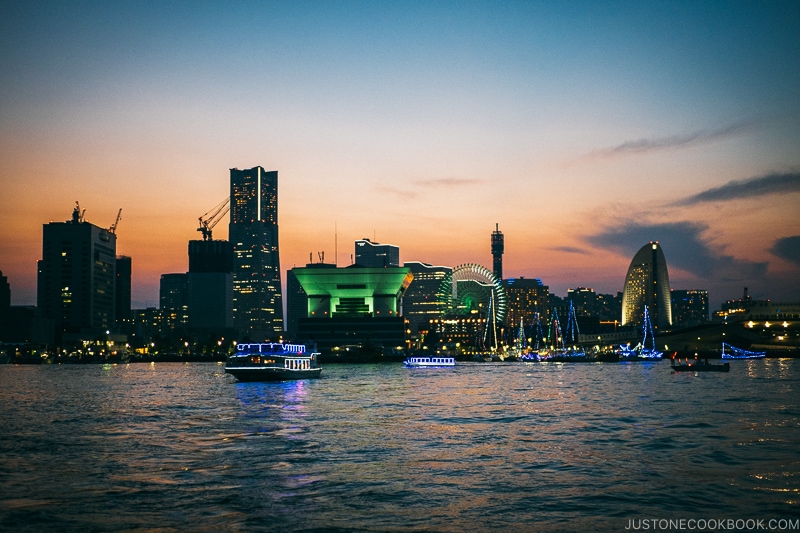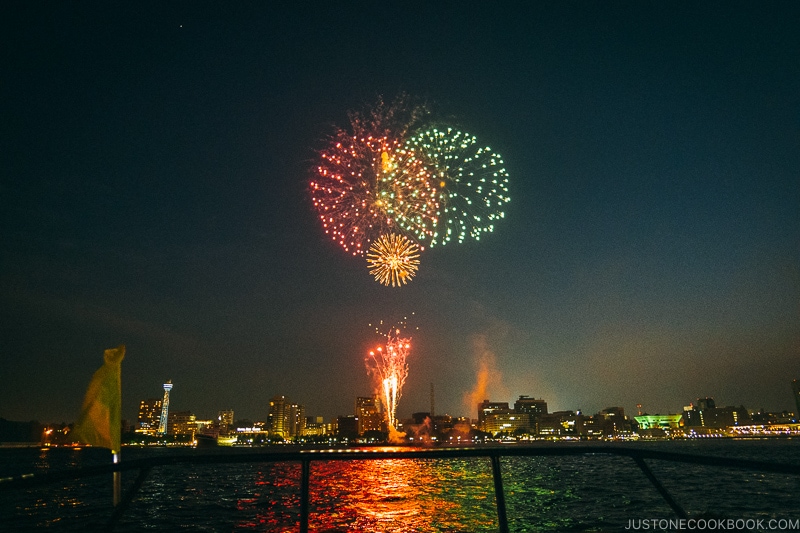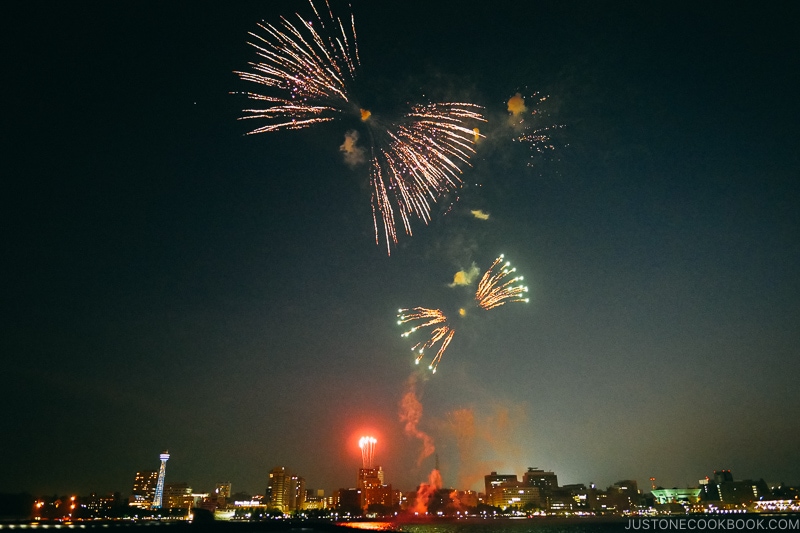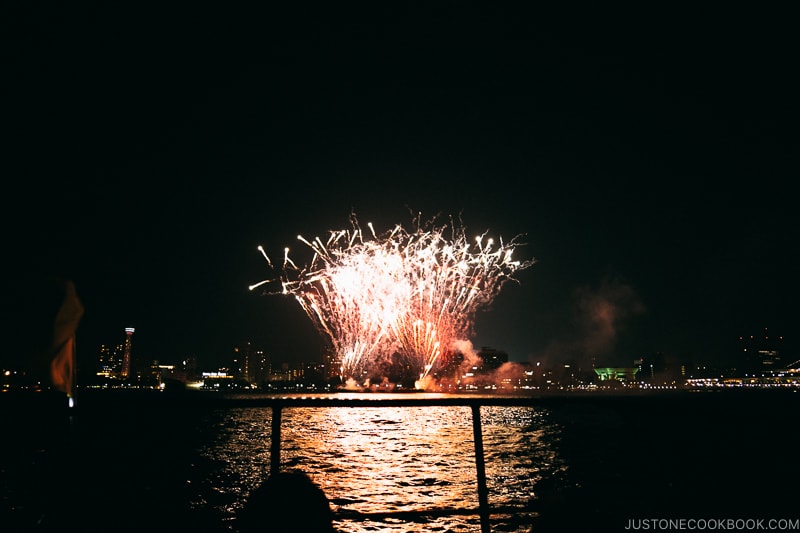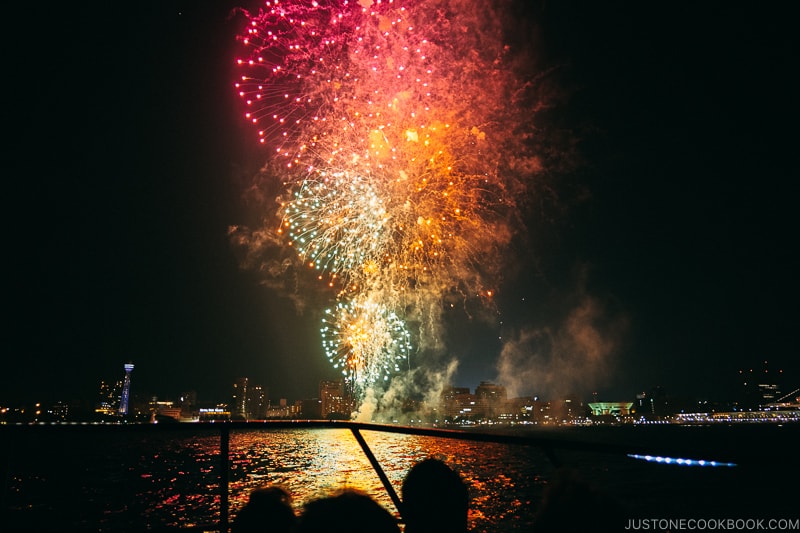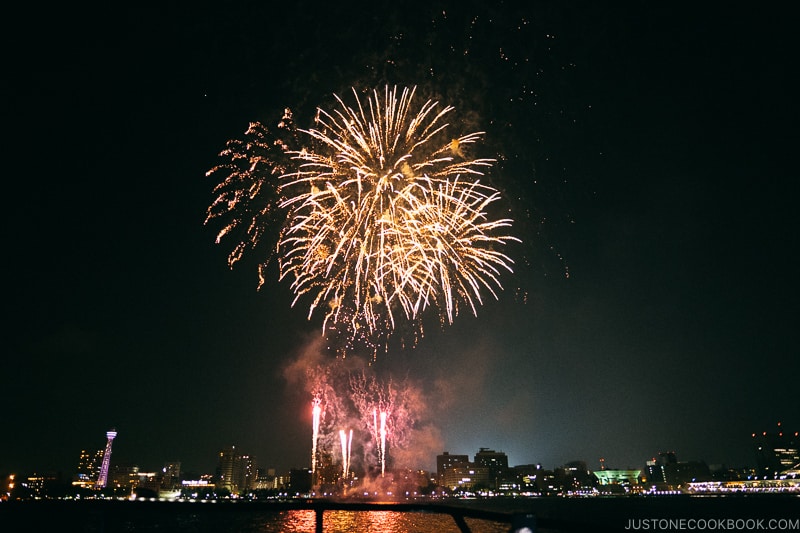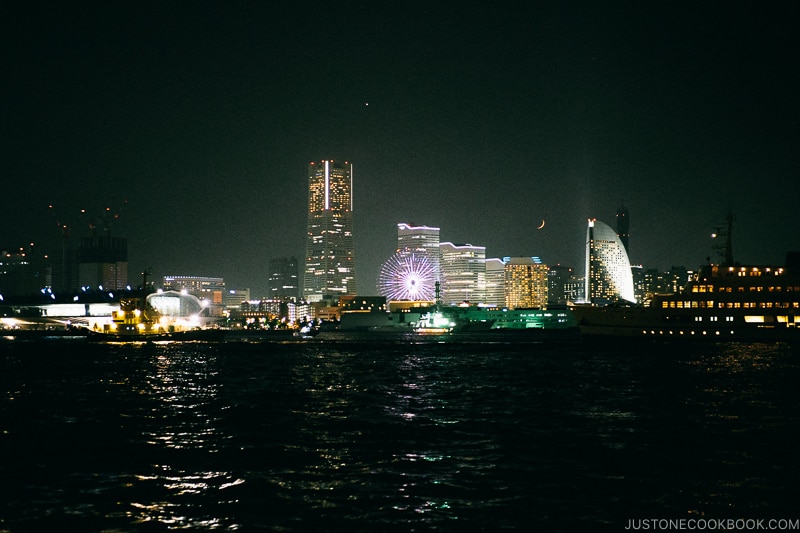Every summer in Japan, between July and September, hundreds of beautiful firework display light up the night sky across the country. Japan’s fireworks festivals range in size, and the massive ones are unreal. They are an explosive light show illuminating the night sky and delighting the crowd. During our visits to Japan, we had a chance to watch two very different fireworks displays. We’ll share our experiences and tips on attending Japan’s fireworks festival you can plan your own trip.
History of Japan’s Fireworks Festivals
Fireworks are hanabi (花火) in Japanese and translate to “flower fire.” Japan’s fireworks festivals are called Hanabi Taikai (花火大会). We watched #Yokohama #fireworks from the boat in Yokohama Bay! #JOCinJapan #横浜花火大会 A post shared by Namiko Chen (@justonecookbook) on Jul 15, 2018 at 7:32am PDT So, how did this all get started? The history of fireworks in Japan existed before the 1600s, but the first official fireworks festival started in 1733. Japan suffered famine and many deaths in 1732, and General Tokugawa Yoshimune (8th shogun) wanted to honor and mourn the dead from the previous year. This was the start of the Sumidagawa River Fireworks Festival in Tokyo. There are websites that provide detailed information about each fireworks festival (we’ll share links below), but most are in Japanese only. The websites share the crowd size and how many fireworks will be set off during the festival. The smaller ones set off just a few hundred, but the famous fireworks festivals blast over 20,000 fireworks.
How Much Does it cost to Watch Fireworks in Japan
Almost all the fireworks are free and available for public viewing. However, you usually arrive very early to secure a good viewing spot. Depending on the popularity of the fireworks show, it’s best to show up at least a few hours in advance and reserve your spot. The fireworks festivals are located throughout the country. There will be transportation and hotel costs associated with visiting the festival if there is a particular one you want to visit. Remember to plan ahead, as nearby hotels are usually booked out months in advance.
Wear Yukata for Fireworks
When you go to a summer fireworks festival in Japan, many people will wear yukata (浴衣). Yukata is a casual summer kimono made of cotton or synthetic fabric. It’s similar to the bathing wear many Ryokans offer its guests during their stay. The ones for the fireworks festival are usually brighter in color and patterns. Yukata are much easier to wear compared to traditional kimonos and are available for both males and females. You can rent yukata in cities or buy one in retail shops. Yukata starts at $40 on the low end at thrift shops to several hundred (USD) at high-end kimono stores. It is typical for ladies to have a drawstring pouch or bag (kinchaku 巾着) when wearing yukata.
Tips on Getting Ready For Japanese Fireworks
Here are a few tips on getting ready for the fireworks festival:
Food Choices at a Fireworks Festival
Many large fire festivals will have food vendors selling classic Japanese street food, including karaage, beer, yakisoba, shaved ice, grilled meats, and many more. It’s a great place to try out many classic Japanese street foods.
Fireworks in Lake Kawaguchi and Yokohama
We’ve attended two fireworks in Japan, one near Mt. Fuji and the other near Nami’s Yokohama home. We’ll share our experiences below as they were pretty different.
Lake Kawaguchi Fireworks Festival
The Lake Kawaguchi Fireworks is one of the major fireworks festivals around Mt. Fuji. It is part of the Five Lake Festival Fireworks; over 10,000 fireworks are set off from the middle of the lake during the celebration. We arranged with the hotel to have dinner early at 5 p.m. so we could ride the free shuttle they provided from the hotel to the station near the fireworks festival. It was about a 10-minute walk from the station to Lake Kawaguchi. We arrived about 30 min before the show and were able to find some empty spots. However, it quickly filled up after we settled down. The rain was drizzling intermittently, but luckily, the weather cooperated with us. If the weather is unsuitable, the festival is usually delayed a day or two instead of canceled in Japan.
Japan’s Fireworks Format
After waiting anxiously, the fireworks started to loud cheers from the crowd. Unexpectedly, the firework ended after about 5 minutes. Just as we were wondering what was going on, we realized the format at Lake Kawaguchi is first the announcement of the fireworks, then sponsors, and finally, the fireworks display. The other type of fireworks is a continuous, non-stop fireworks from the beginning to the end. From then on, the fireworks would be set off for 3 – 5 minutes, a sponsor’s name would be announced, and fireworks would commence. I find this format very anticlimactic and hard to get excited as it constantly starts and stops. Nevertheless, we got to experience some dazzling displays of fireworks. Besides the traditional fireworks patterns, the fireworks these days feature different shapes, including puppy, heart, smiley face, and other characters. Since we needed to take the shuttle from the station to the hotel and wanted to avoid the stampede of crowds leaving, we stayed for about 45 minutes of fireworks but didn’t stay until the finale.
Yokohama Sparkling Twilight
Viewing the fireworks is always free. However, getting the best seats means getting there super early or paying a premium. The second firework we’ll share is the Yokohama Sparkling Twilight, which we did pay for premium seats. Many of Japan’s fireworks are set off from a river or a body of water, and the best viewing position is sometimes from a boat. The famous Sumidagawa Fireworks Festival costs upwards of $300 – $400 a person to reserve a seat on a boat. The Yokohama Sparkling Twilight is a much smaller fireworks display, costing about $100 a person. For the price, you get a bento box and a can of beer or soda along with the boat ride in the bay. By the time we booked our seats, all the large ships were full and we ended up with a smaller boat.
Watching Japan’s Fireworks Festival from a Boat
We checked in with the boat company at the dock around 6 pm, and the boat left the pier at 6:30 pm. The boat spent about 30 min touring the bay before settling on its final position. When we were walking around the harbor area earlier in the afternoon, there was plenty of seating around the bay to get a good view. It had filled up quickly by 6:30 pm. As we were cruising in the bay, there were many other boats on the water to view the fireworks festival. Before the fireworks, there was a parade of Twilight Jewelry Boats. These boats were decorated with lights and paraded around the bay. At 7:30 pm, the fireworks set off promptly, and it was 30 min of non-stop fireworks display and excitement. Our small boat turned out to be a blessing in disguise. The boat’s staff had placed sitting mats on the bow, and the captain allowed all the passengers to head outside to sit on the bow so we had unobstructed views of the fireworks. It was a fantastic experience to observe the beautiful explosions lighting up the night sky with Yokohama downtown as the backdrop. Our family had a great time and will cherish the memory for a long time. If we watch it again, we’ll just go early to the bayfront and reserve a good spot instead of paying for a seat on the boat.
Popular Fireworks Festivals in Japan
Resources for Fireworks Festivals in Japan
Here are some helpful links, but most are in Japanese only. Please use Google Translate to translate it to your language of preference. Thank you for reading our post on Japan’s fireworks festival. If you are interested in other posts on Japanese culture, you can check them out here.
